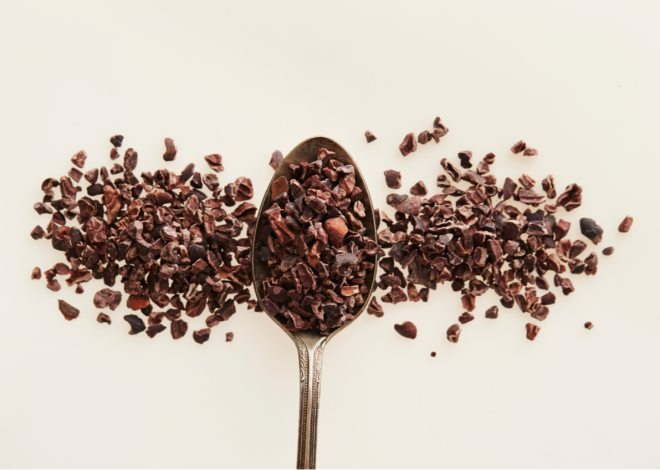
Carb Cycling: The Secret to Effective Nutrition
Carbs—friend or foe? Many people believe that cutting carbs is the best way to lose weight, while others see them as essential for energy and muscle growth. However, what if there was a way to strategically use carbohydrates to maximize fat loss, performance, and muscle gain? That’s where carb cycling comes in.
In this article, we’ll explore what carb cycling is, how it works, and the key benefits of this advanced nutrition strategy.
What Is Carb Cycling?
Carb cycling, also known as carbohydrate periodization, is a strategic approach to carb intake where you alternate between high-carb, moderate-carb, and low-carb days based on your activity levels and goals.
Instead of completely cutting out carbs, this method allows you to adjust your intake to optimize fat burning, energy levels, and muscle recovery. As a result, you can maintain better performance while achieving your goals.
The Three Types of Carb Days
High-Carb Days – Increase energy, enhance performance, and boost muscle growth.
Low-Carb Days – Promote fat burning and improve insulin sensitivity.
Moderate-Carb Days – Maintain balance and support recovery.
Who Can Benefit from Carb Cycling?
Carb cycling is ideal for:
- Athletes and bodybuilders looking to improve performance and recovery.
- Individuals aiming for fat loss without sacrificing muscle.
- Anyone struggling with energy crashes on a low-carb diet.
How Does Carb Cycling Work?
Carb cycling is typically planned around training intensity and goals. By following a structured approach, you can maximize results. Here’s how each type of day works:
1. High-Carb Days (Refuel & Perform)
On these days, you consume a higher amount of carbohydrates to:
🏋️♂️ Replenish muscle glycogen for better workouts.
🔥Boost metabolism and prevent metabolic slowdowns.
💪 Support muscle growth and recovery.
💡 Best for: Heavy strength training, high-intensity workouts, or endurance sports.
2. Low-Carb Days (Burn Fat & Reset)
Low-carb days focus on fat burning and insulin sensitivity by reducing carb intake and prioritizing proteins and healthy fats.
🔹Encourages fat as the primary fuel source.
🔹Stabilizes blood sugar and controls cravings.
🔹Enhances metabolic flexibility.
💡 Best for: Rest days, light cardio, or recovery days.
3. Moderate-Carb Days (Balance & Maintain)
Moderate-carb days maintain steady energy while keeping fat loss and muscle preservation in check.
– Supports overall recovery.
– Prevents extreme energy fluctuations.
– Helps transition between high- and low-carb days.
💡 Best for: Moderate-intensity workouts or days with light activity.
The Benefits
Carb cycling is more than just manipulating macronutrients—it’s a strategy that offers multiple benefits for fat loss, metabolism, and overall health. By cycling your carbs properly, you can achieve sustainable results.
1. Optimized Fat Loss Without Sacrificing Muscle
One of the biggest challenges of dieting is losing muscle along with fat. Fortunately, carb cycling helps preserve muscle by ensuring your body burns fat instead of breaking down muscle.
2. Increased Energy and Performance
Unlike strict low-carb diets that leave you feeling exhausted, carb cycling provides enough energy for intense workouts by replenishing glycogen stores on high-carb days. This way, you can push harder in the gym and see better results.
3. Improved Insulin Sensitivity
Since alternating between high- and low-carb days helps regulate blood sugar levels, it also improves insulin function, reducing the risk of diabetes and metabolic disorders. In the long run, this can support overall metabolic health.
4. Prevents Metabolic Slowdown
Long-term low-carb dieting can slow down your metabolism. However, high-carb days act as a reset, boosting leptin levels—the hormone responsible for fat burning and hunger control.
5. Better Adherence to a Diet
Strict low-carb diets can feel restrictive, making them hard to follow. Because carb cycling offers flexibility, it allows you to enjoy carbs while still making progress toward your goals.
6. Supports Hormonal Balance
Low-carb dieting for too long can disrupt thyroid function, cortisol levels, and hormone production. Luckily, carb cycling ensures that your body gets enough nutrients to support hormonal health.
How to Start Carb Cycling
Ready to try carb cycling? If so, follow these steps:
1️⃣ Determine Your Goal – Are you looking to burn fat, build muscle, or maintain weight?
2️⃣ Plan Your High, Moderate, and Low-Carb Days – Make sure to match your carb intake with training intensity.
3️⃣ Prioritize Whole, Nutrient-Dense Foods – Instead of processed foods, focus on complex carbs, lean proteins, and healthy fats.
4️⃣ Monitor Your Progress & Adjust – Always track how your body responds and make tweaks if needed.
💡 Pro Tip: If you’re new to carb cycling, start with a simple 3-day cycle:
🍌 Day 1: High-Carb (Strength Training)
⚖️Day 2: Moderate-Carb (Moderate Activity)
😌Day 3: Low-Carb (Rest or Light Cardio)
By repeating this cycle and adjusting it based on your progress, you can find what works best for your body.
Final Thoughts: Is it Right for You?
Carb cycling is a powerful nutrition strategy that balances fat loss, energy, and muscle preservation. Unlike extreme low-carb diets, it allows for flexibility, better performance, and long-term sustainability.
🚀 If you want to burn fat while keeping your energy high, carb cycling might be the perfect approach for you!







